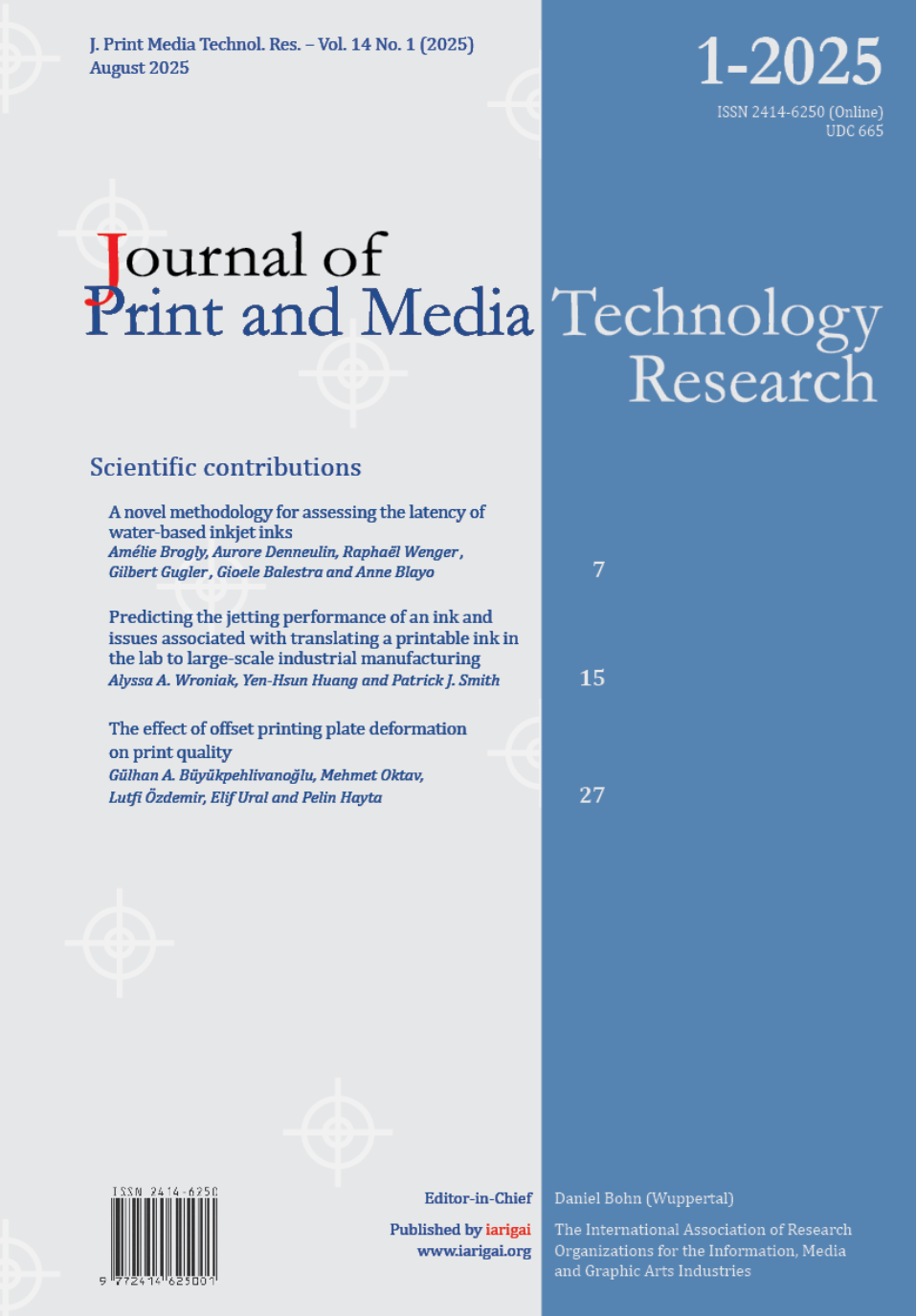Predicting the jetting performance of an ink and issues associated with translating a printable ink in the lab to large-scale industrial manufacturing
Main Article Content
Abstract
Inkjet technology is advancing to allow for more printable materials (e.g. higher viscosity inks can now be jetted). However, there is an issue of materials that can be printed in the research lab becoming unprintable when scaled up to the industrial scale. In this review, the differences between inkjet printers that are used in academic research and those that are used in industry are discussed. In academia, there is a focus on exploring new applications where inkjet can provide an advantage, which requires the use of simple inks (e.g. a solvent). In industry, the focus is on productivity, which results in inks containing a range of additives that ensure regular, reliable printing over long cycle times. Therefore, the principal question is, how does one gain confidence in an ink’s printability regardless of the printer or scale of work employed? Inkjet research uses small-scale printers whereas industry uses large-scale printers. The scale of work leads to printing conditions specific to the machine used that can change the printability of an ink (as it translates from academia to industry). This difference in printing conditions is creating a gap between academic inkjet research and industrial inkjet development. To understand how to traverse this gap, all the factors that affect the printability of an ink need to be evaluated and understood. Printability is determined by fluid properties, rheology, and printing conditions. Thus, this review investigates printability. By understanding all the factors that affect printability, and how research-lab inkjet and industrial inkjet differ, an improvement in the transfer of newly researched inkjet systems into the industrial markets can be achieved.
Article Details

This work is licensed under a Creative Commons Attribution-NonCommercial 4.0 International License.
